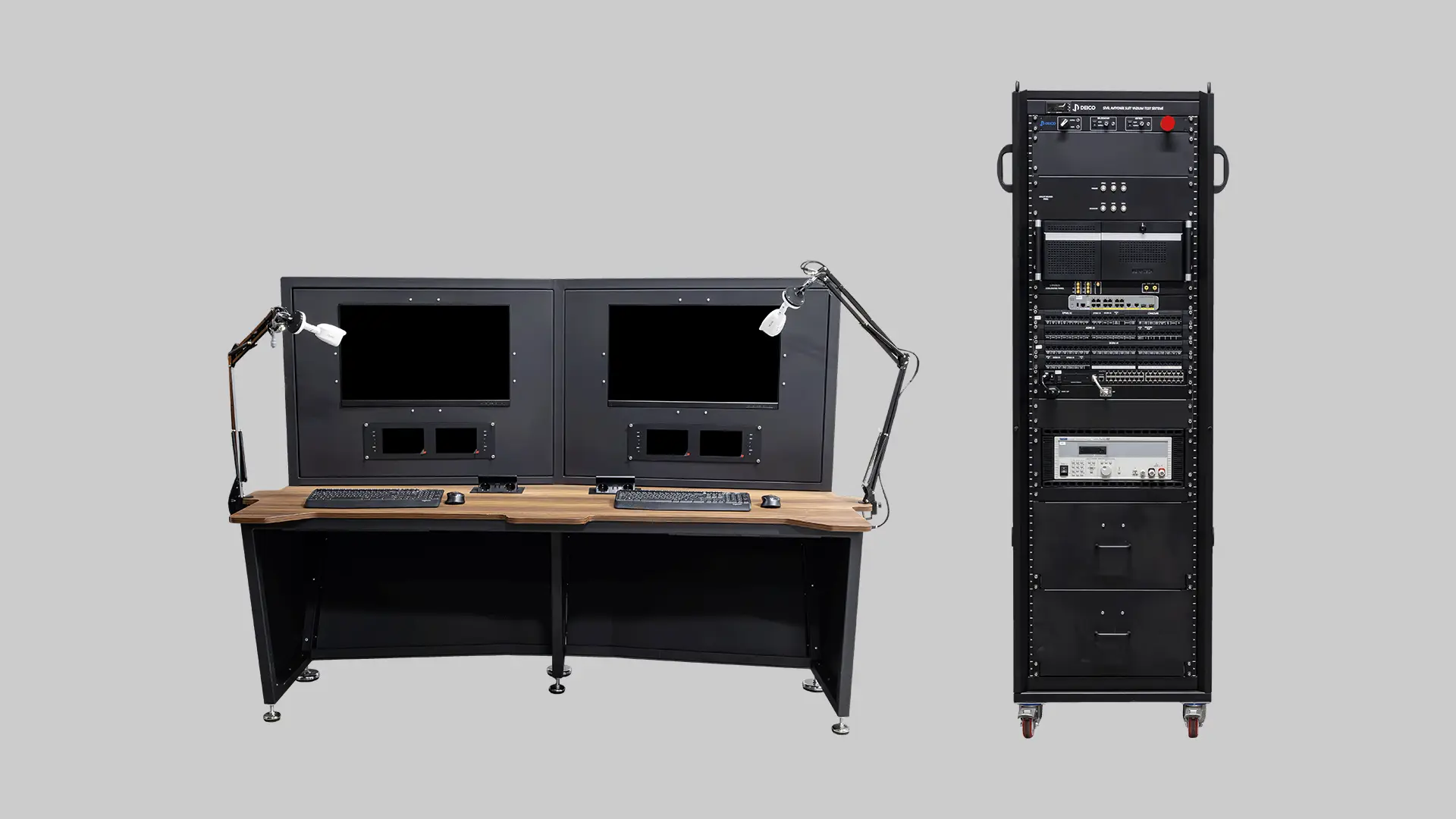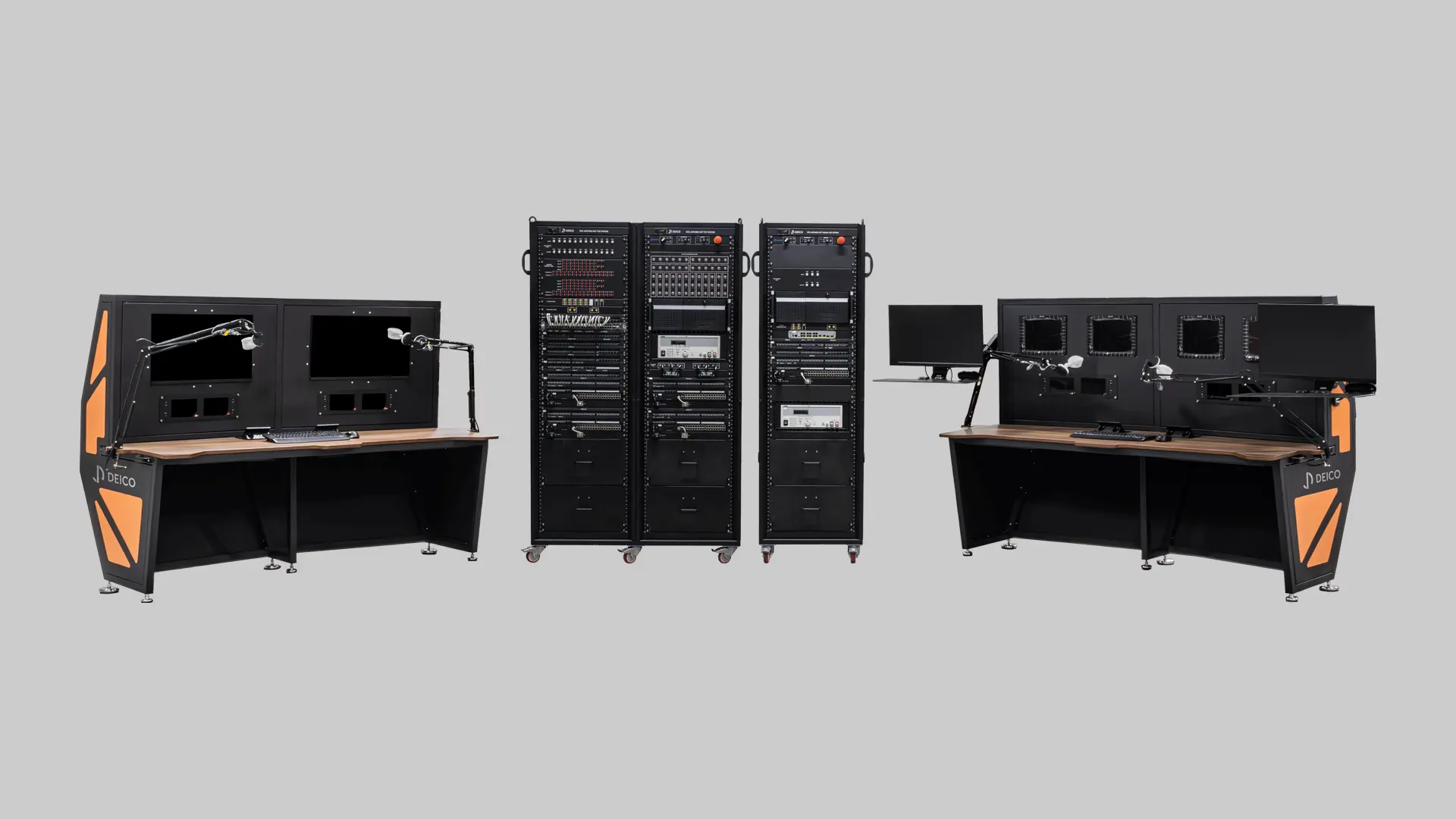Project Overview
Project Objective
The System Integration Lab connects real avionics hardware—including the central processor unit, navigation systems, cockpit displays, and network units—with a representative cockpit setup to validate complete system interoperability using simulated I/O and custom cabling infrastructure.
Target Platform and Industry
-
All avionics including flight displays, data concentrators, central processing units, and aircraft-wide communication networks for civilian fixed-wing aircraft.
- Applicable to commercial aviation, general aviation, and avionics development sectors.
Scope and Functionality
This project validates the interoperability of the civil aviation platform’s avionics suite by integrating all real hardware components in a controlled lab environment, reducing the risks associated with flight integration.

Technical Specifications
System Capabilities
-
Integrates the complete avionics suite of a civilian fixed-wing aircraft in a laboratory environment to validate system-level interoperability prior to flight.
- Injects a wide variety of electrical faults on any I/O channel to validate the unit’s safety-critical responses.
- Supports full simulation and monitoring of avionics buses, including MIL-STD-1553B and ARINC429.
- Supports simulation and monitoring of serial interfaces, including RS-422 and RS-485, for data communication and control signal validation.
- Provides signal simulation and measurement for analog inputs, discrete I/O, and serial communications with precise electrical timing and level control.
- Supports synchronization and timing tests via 1PPS (One Pulse Per Second) signals to ensure time-aligned system behavior.
- Interfaces with Ethernet-based avionics networks using integrated network switches to simulate data flow, monitor traffic, and verify deterministic performance.
- Offers support for high-definition video interfaces such as 1080p25 to validate cockpit display integration and video signal routing.
- Conditions all I/O to precisely match the electrical characteristics of the real aircraft.
- Features a mass interconnect interface for fast, reliable, and repeatable connections to the unit under test (UUT).
- Provides an intuitive graphical user interface (GUI) for test automation, monitoring, and analysis.
Standards, Protocols, and Compatibility
- Ethernet controlled & SLSC Modular Architecture, MIL-STD-1553 Interface Support, ARINC 429 Data Bus Simulation, RS-422 and RS-485 Serial Communication Protocol
- 1PPS signal integration for time synchronization
- Ethernet-based avionics network support
- 1080p25 video interface compatibility
DEICO Modules Used
-
Ethernet controlled modules (DE2001, DE2101, DE2102)
- 1553 Bus Coupler (DE8208)
- Breakout box

Project Value and Impact
Why This Project Matters
This project is vital because it enables the integration and validation of the aircraft’s entire avionics suite on the ground, ensuring system-level problems are fixed before they can endanger live flight operations.
Customer and Industry Benefits
By enabling the early detection of critical integration faults, the lab directly reduced the customer’s program costs and accelerated the development schedule, delivering a more reliable and airworthy system while mitigating the high risks of flight testing.
